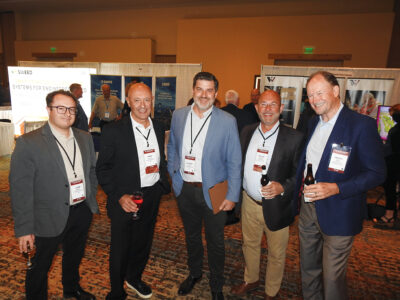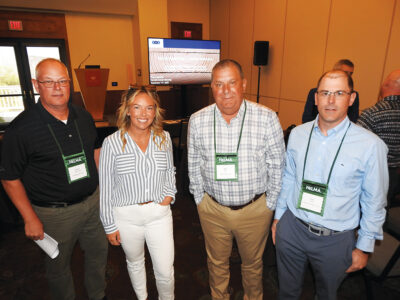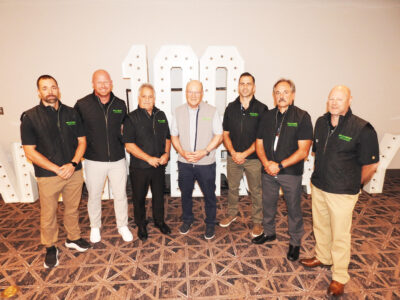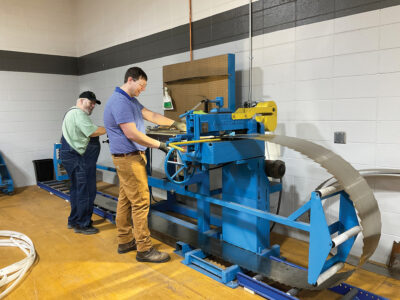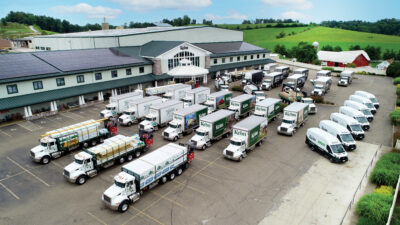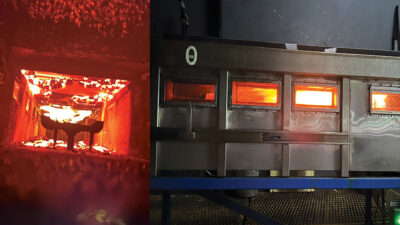Operating A Safer Sawmill: Lessons From The 2025 SFPA Safety Summit
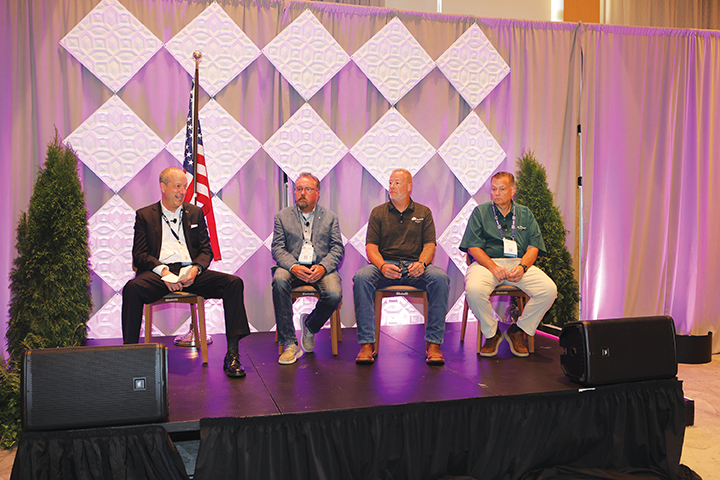
From left: Dale Bracken, National Assessment; Vince Almond, Almond Brothers Lumber Co.; Johnny Sauls, West Fraser Inc.; and Stephen Peskar, Weyerhaeuser Co. Photo courtesy Robb Cohen Photography & Video
In a sawmill, danger is always close by. From sharp spinning saws to heavy rolling logs to forklifts zipping across the yard, the work demands constant attention.
Creating a safer work environment in the forest products industry isn’t just hanging a poster on the wall or a speech from management — it’s what gets you and your coworkers home at the end of every shift.
That single message of making sure workers safely returned home each day was a shared belief among the panelists participating in the Southern Forest Products Association’s inaugural Sawmill Safety Summit held during the 38th Forest Products Machinery & Equipment EXPO in Nashville on August 7, 2025.
The Summit kicked off with a ceremony recognizing seven SFPA Lumber Manufacturer member mills that hit an incredible milestone: 1.8 million hours worked in 2024 without a single incident.
SFPA Lumber Manufacturer members are considered for the award based on standardized information submitted using OSHA Form 300A – the Summary of Work-Related Injuries and Illnesses. This form provides a yearly snapshot of workplace safety by reporting the number of work-related injuries and illnesses at each facility.
The 2024 SFPA John Edgar Rhodes 2024 Sawmill Safety Excellence Awards recipients were:
- Almond Brothers Lumber Co. – Coushatta, LA
- Lampe & Malphrus Lumber Co. – Smithville, NC
- West Fraser Inc. – Angelina, TX
- West Fraser Inc. – Blackshear, GA
- West Fraser Inc. – McDavid, FL
- Weyerhaeuser Co. – Idabel, OK
- Weyerhaeuser Co. – Zwolle, LA
While the awards were the celebration, recognized mill representatives then came together for the summit’s central focus: an honest conversation on safety. Those panelists, led by moderator Dale Bracken with National Assessment, included:
- Vince Almond, Almond Brothers Lumber Co. president
- Johnny Sauls, safety manager with West Fraser Inc.
- Stephen Peskar, Weyerhaeuser’s director of lumber manufacturing for the Mid-South and Carolina regions
Here’s what they shared on how they’ve built successful safety cultures, what’s working, what’s not, and how to keep pushing toward a shared goal: zero incidents.
Safety Is Everyone’s Job
One clear takeaway was that safety doesn’t live in the front office — it lives on the mill floor. Employees know the equipment better than anyone. When workers speak up and management acts on their input, the whole culture shifts.
Giving crews ownership of safety programs turns “the company’s program” into “our program,” making everyone more invested in keeping the workplace safe.
Keeping Safety Fresh
Even the best safety programs can grow stale. Over time, people often tune out if they hear the same message repeatedly. Mills can combat this by rotating themes, offering incentives, and launching challenge programs where employees suggest improvements that management follows through on. The key is keeping safety alive and real, not letting it run on autopilot.
The Power of Small Habits
The roots of safety culture lie in small actions and simple routines—wearing protection, moving materials correctly, and looking out for coworkers. Every action matters, and each choice influences the next person. Each safe choice reinforces the culture, influencing the next person. Safety isn’t just about big programs; it’s about everyday decisions.
Old Hands Guiding New Hires
With turnover high, crews often include both veterans and new workers. Experienced employees help train newcomers, but structured safety meetings and outside perspectives fill gaps. External trainers can notice risks that feel routine to longtime workers, and clear explanations for new hires prevent confusion and accidents.
Technology Joins the Toolbox
Relationships and culture remain central, but technology adds layers of protection. RFID-enabled hard hats can alert workers near heavy equipment, complementing training and vigilance. Gadgets cannot replace culture, but they can reinforce it where the margin for error is slim.
When Safety Leaves the Mill
A strong safety culture shows when employees carry safe habits home — stopping risky behaviors, fixing hazards, and protecting family members. Safety becomes a mindset, not just a policy.
Facing Today’s Risks
Modern hazards extend beyond saws and forklifts. Workplace violence, active shooters, and vehicle accidents are real threats. Training, emergency response exercises, barriers, and gate controls help manage these risks, expanding safety’s scope to the full spectrum of today’s work environment.
The Heart of a Safety Culture
Strong safety culture starts with relationships. Workers look out for teammates, supervisors lead by example, and managers act on promises. Small, consistent habits carry as much weight as big programs. Safety has no endpoint — it requires vigilance during long shifts, routines, and moments of fatigue.
Key Takeaways
- Listen to the people who run the machines.
- Keep safety fresh with new approaches.
- Reinforce small habits every day.
- Support new hires with training and mentorship.
- Use technology as another layer of protection.
- Extend safety beyond the gates and into daily life.
- Stay relentless, even when it gets tough.
Zero incidents isn’t just a dream. Mills across the industry are proving it is achievable. The challenge is applying these lessons in your workplace. At the end of the day, safety isn’t about meeting regulations — it’s about making sure everyone goes home, every shift, every day.
Watch the full Safety Summit to learn more at sfpaexpo.com/sawmill-safety-summit.

